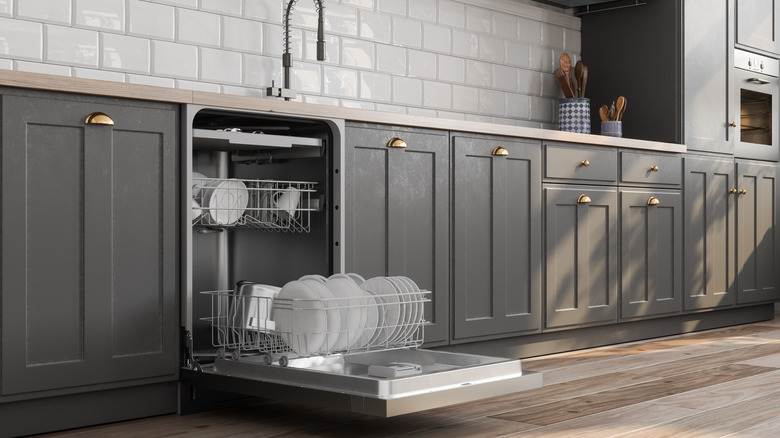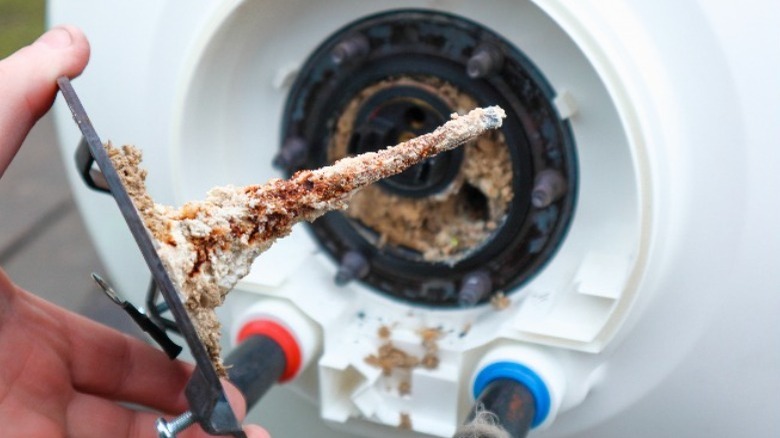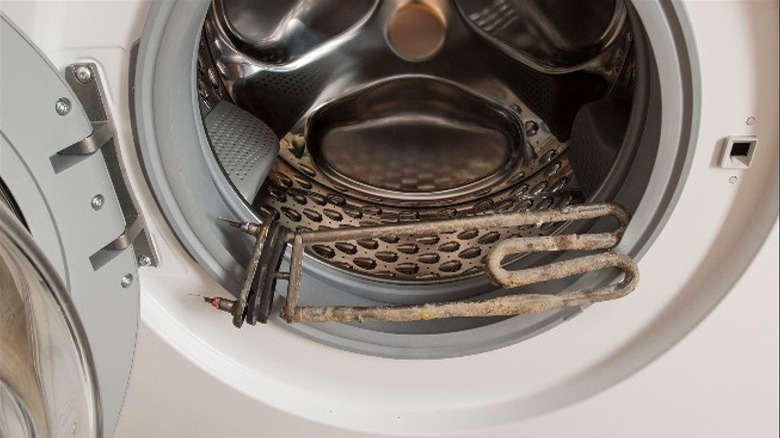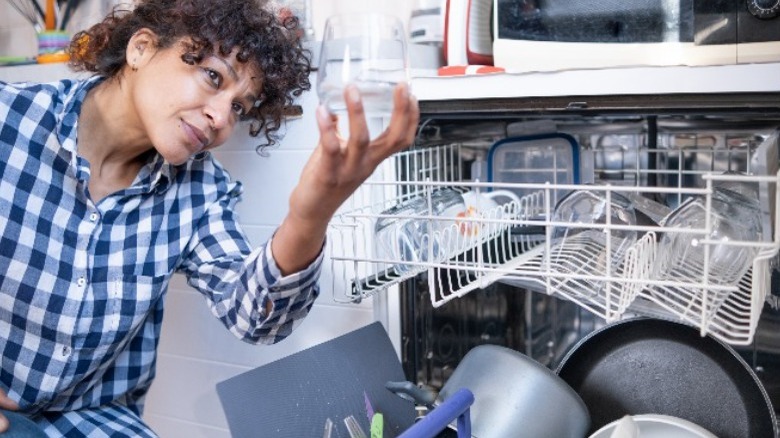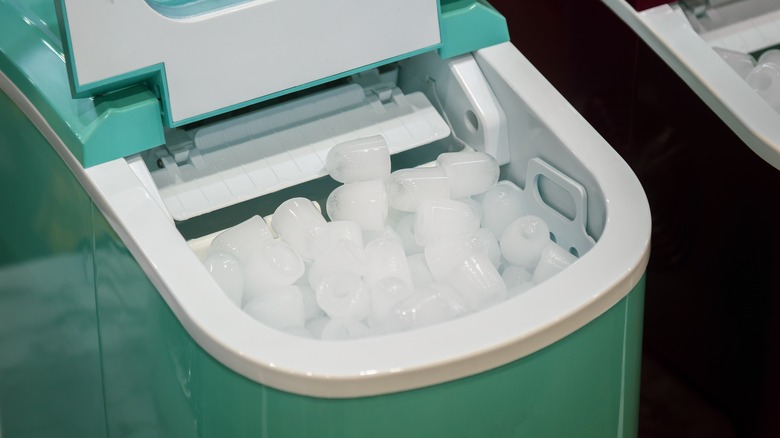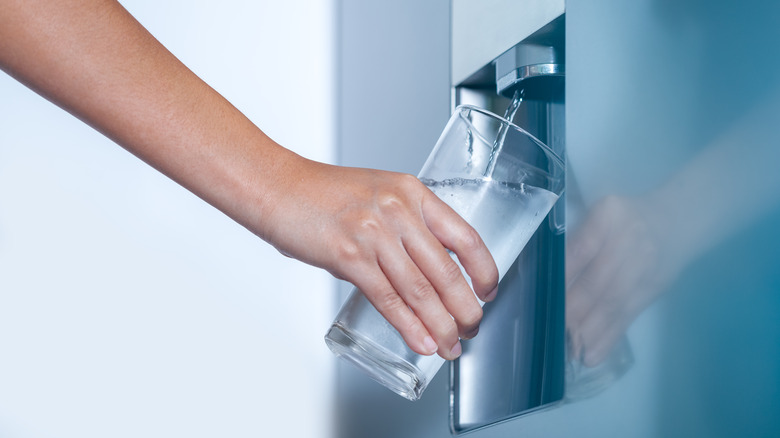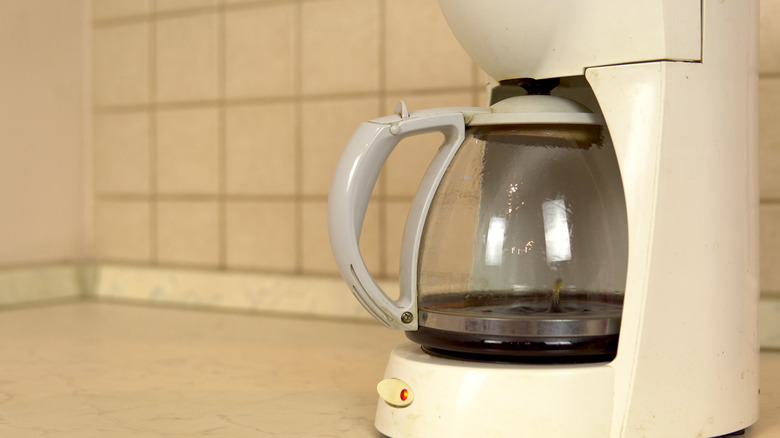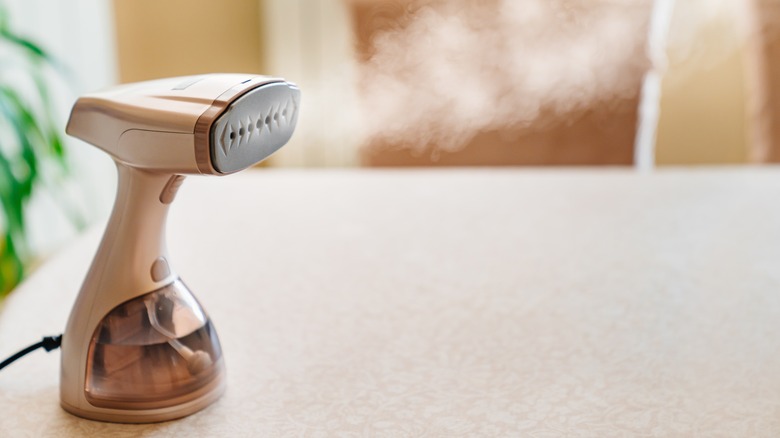Home Appliances That Can Be Seriously Damaged By Hard Water (And What To Do About It)
Does your home have hard water? If so, then you've likely seen mineral deposits on or around faucets, staining in sinks and tubs, soap scum on shower curtains and walls, and water spots all over your cookware and dishes. While hard water itself doesn't pose any health risks, the calcium and magnesium buildup that is the result of it can cause serious damage to several appliances throughout the home. Basically, any of your appliances that use water may be impacted.
The same mineral build up you see around your faucets can build up in or around the appliances themselves. If this occurs, they often have to work harder than their counterparts in homes without hard water. All of this extra work and energy can lead to a decreased lifespan. Learning about the potential damage that can be caused is just the first step. Once you have this knowledge, you'll want to take action to minimize the negative impact of hard water and protect the appliances in your home. Here's what to look out for and how to fix it.
Water heater
Hard water has the potential to cause severe damage to a home's water heater. As the water heater warms up the water inside of it, some of it may vaporize, turn to a gas, and escape. When this happens, the minerals from the water are left behind and can build up inside the unit over time. This scale can cause several different problems. For example, different parts of the unit may deteriorate and malfunction, such as the hot water sensor or heating element. If this occurs, your unit may not heat water to the proper temperature — it could even make it dangerously hot or not heat it at all. Mineral deposits can also make the unit less efficient, particularly in the case of gas models. As the deposits build up over the burners that heat the water, they'll have to exert more energy to do their job.
To protect against hard water damaging your appliance, it is essential to flush the water heater at least once every year. Doing so helps remove the sediment buildup in the unit, helping to prevent the potential problems outlined above. Flushing it is important in all homes, but even more so in those dealing with hard water to help extend the unit's life.
Washing machine
Washing machines can also be threatened by hard water. As the calcium and magnesium build up inside the unit, they may cause damage to its various components. For example, if the machine's pumping mechanism is covered with mineral buildup, it may not function as well or could be forced to work harder than necessary. With too much scale, the water flow can also become restricted, leading to the need to have repairs done on the unit. In fact, this can lead your appliance to break down three years earlier than it normally would.
Installing a water softener can help remedy hard water's havoc on your washing machine. It will work to remove calcium, magnesium, and other minerals from the water before it enters the machine. Using hotter wash temperatures can also help minimize the effects of hard water on your appliance, since the warmer water breaks down more minerals. However, you'll have to balance this benefit with the added utility cost and the additional wear on clothes.
Dishwasher
If your home has hard water, then you've probably already noticed that your plates, glasses, and silverware don't always emerge from the dishwasher looking like new. They are likely covered by a cloudy residue or water spots. If you take a look at the base or sides of your dishwasher, you'll probably notice this same cloudy residue, which is caused by the buildup of minerals from the water. These mineral salt residues can cause the dishwasher's interior to rust, or worse, it may interfere with how the heating element or pump works.
The first step in protecting your dishwasher against the ill effects of hard water is to remove any existing buildup. Distilled white vinegar can help with this task because it is acidic and will eat away at the scale. Start by making sure that your dishwasher is empty, and then add a bowl of vinegar to the top rack. Set the machine to run for one cycle, and repeat if necessary. Once you've tackled the existing residue, switching to a dishwasher detergent that incorporates a water softener into its ingredient list can help prevent future problems.
Ice maker
If your freezer has an ice maker or you have a standalone unit, your home's hard water could be damaging it as well. As the mineral deposits build up, they may cause the unit to malfunction and prevent it from making any new ice. This will occur if the calcium and magnesium residues attach themselves to the evaporator plates or float switches, which are essential to the ice-making process.
To remove visible mineral buildup, you can dampen a cloth with distilled white vinegar and leave it to sit on the affected areas for 30 minutes (or longer for thicker buildup). Use a small brush or toothbrush to scrub the buildup off. Dip your cleaning tool in more vinegar to help remove any existing minerals. Finally, rinse the area with a damp cloth to remove the vinegar residue. If that's insufficient, you can repeat the steps using a limescale chemical cleaner. However, you'll want to take extra precautions to rinse the unit afterward to remove any chemical residues. You might also want to consider investing in a phosphate filter for your ice maker. It will prevent the calcium and magnesium molecules from binding and building up on your unit.
Water dispenser in refrigerator
The ice maker isn't the only part of your refrigerator that can be damaged by hard water. If your fridge has a water dispenser, hard water can also cause problems with it. You may notice staining around the dispenser or in the tray beneath it. The deposits can also impede the water flow, causing it to take longer to fill a glass. Impacted water may (but not always) look cloudy or taste off.
If you have a water dispenser, some basic maintenance will help prevent hard water from causing serious problems. Start by moving your refrigerator away from the wall so that you can access the water supply valve. Unplug the unit and disconnect the water line. Then, combine water and distilled white vinegar in equal parts and pour them into the water line. Leave the refrigerator powered off and let the vinegar and water sit for at least 10 minutes to help break down any mineral deposits. Then, reconnect the water line and plug the unit back in. Flush the water from the dispenser for at least five minutes or until no vinegar odor is present. For refrigerators that also have an ice maker, it will be a good idea to discard the first batch of ice as well. After flushing the water line, you can use a cloth dampened with vinegar to remove mineral stains from the tray or walls under the dispensers.
Coffee maker
Your home's major appliances aren't the only ones at risk of getting damaged by hard water. Smaller appliances, such as your coffee maker, can also be negatively impacted by mineral build-up. As one example, the accumulation of calcium and other minerals can reduce the heating efficiency of the machine, requiring it to use more energy to make each pot of coffee. This reduced efficiency results from the minerals forming an insulation layer inside the heating tank. Moreover, the minerals may also accumulate within the pipelines designed for moving water through the coffee maker. When this happens, making a pot of coffee can take even longer. And, if a large piece of the limescale breaks off, it could clog the pipes and stop the device from functioning.
Giving your coffee maker a deep cleaning can help remove the mineral build-up. Again, acidic distilled white vinegar can help break down the build-up and properly keep your coffee maker functioning. Combine equal parts water and vinegar in the water tank, place a coffee filter in the basket, and start the machine as if brewing a cup of Joe. However, instead of letting it finish brewing, wait until it is about half finished, and turn the machine off. Give the coffee maker about 30 minutes to sit so the vinegar can work, and then turn it back on to finish running the liquid mixture through the system. To ensure no vinegar residue is left in the unit, run the coffee maker through two more cycles using only water and a clean filter. After this, you can return to using your coffee maker as normal.
Garment steamer
If you use a garment steamer to remove wrinkles from your clothing, hard water can also interfere with it functioning properly. As the minerals accumulate inside the unit, the steamer may become clogged and not dispense steam properly. Residue from the minerals could also potentially be released along with the steam, marking your clothes with splotchy white stains.
Even if you haven't started seeing signs of hard water damage, it is a good idea to clean it every few months. To deep clean your steamer, you'll only need distilled water and white vinegar. The process of removing the build-up should sound familiar by now: Combine the distilled water and white vinegar in a 2:1 ratio and add them to the steamer's reservoir. Turn the steamer on and dispense approximately half of the cleaning solution, then turn it off and let the remaining solution sit and break down the minerals until it has cooled completely. Dispense the rest of the liquid and repeat the above steps as needed if the unit is still clogged. Run one or two cycles with just distilled water until there is no lingering vinegar smell. To prevent future scale caused by hard water, consider using only distilled water in your garment steamer.
